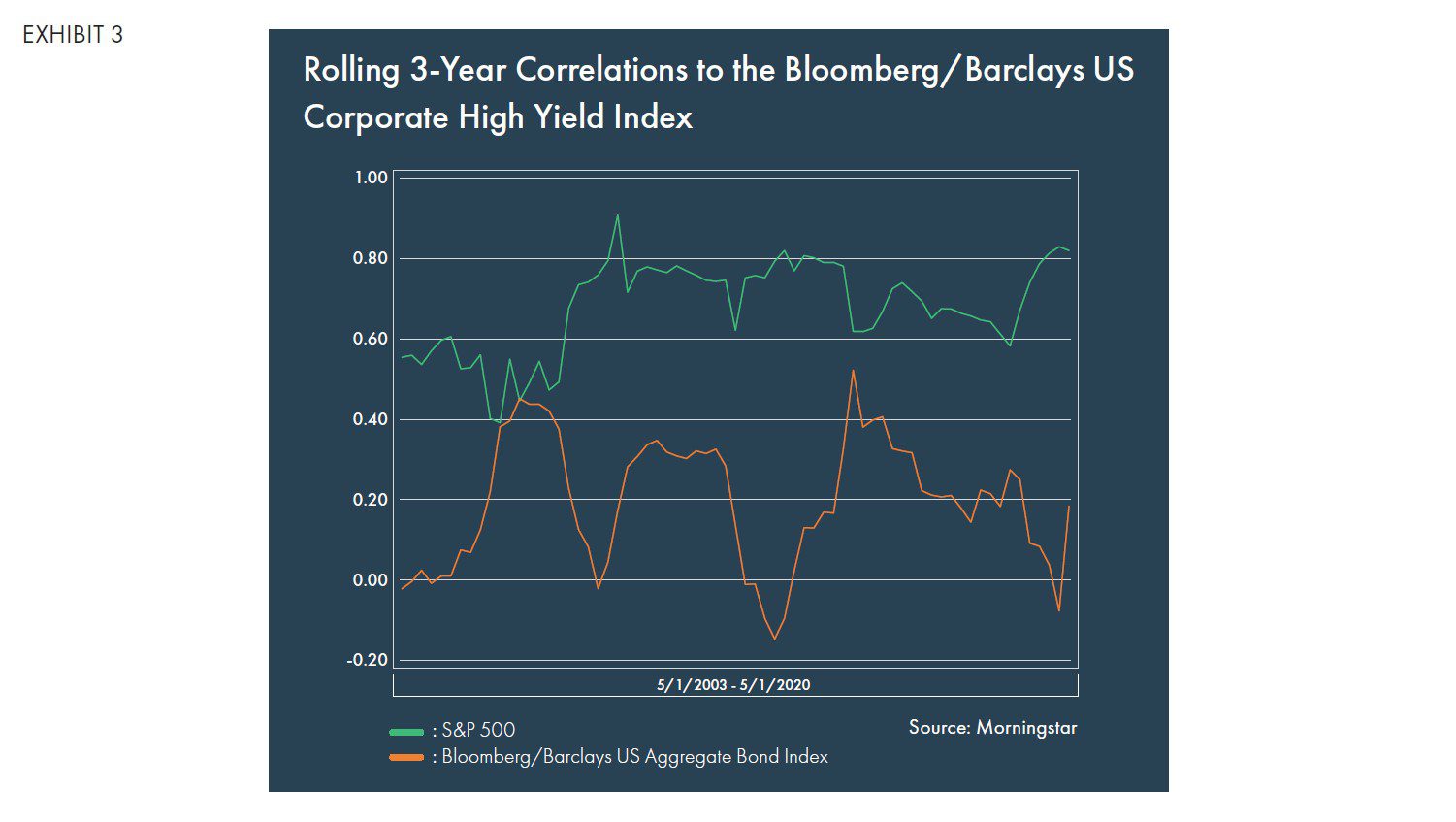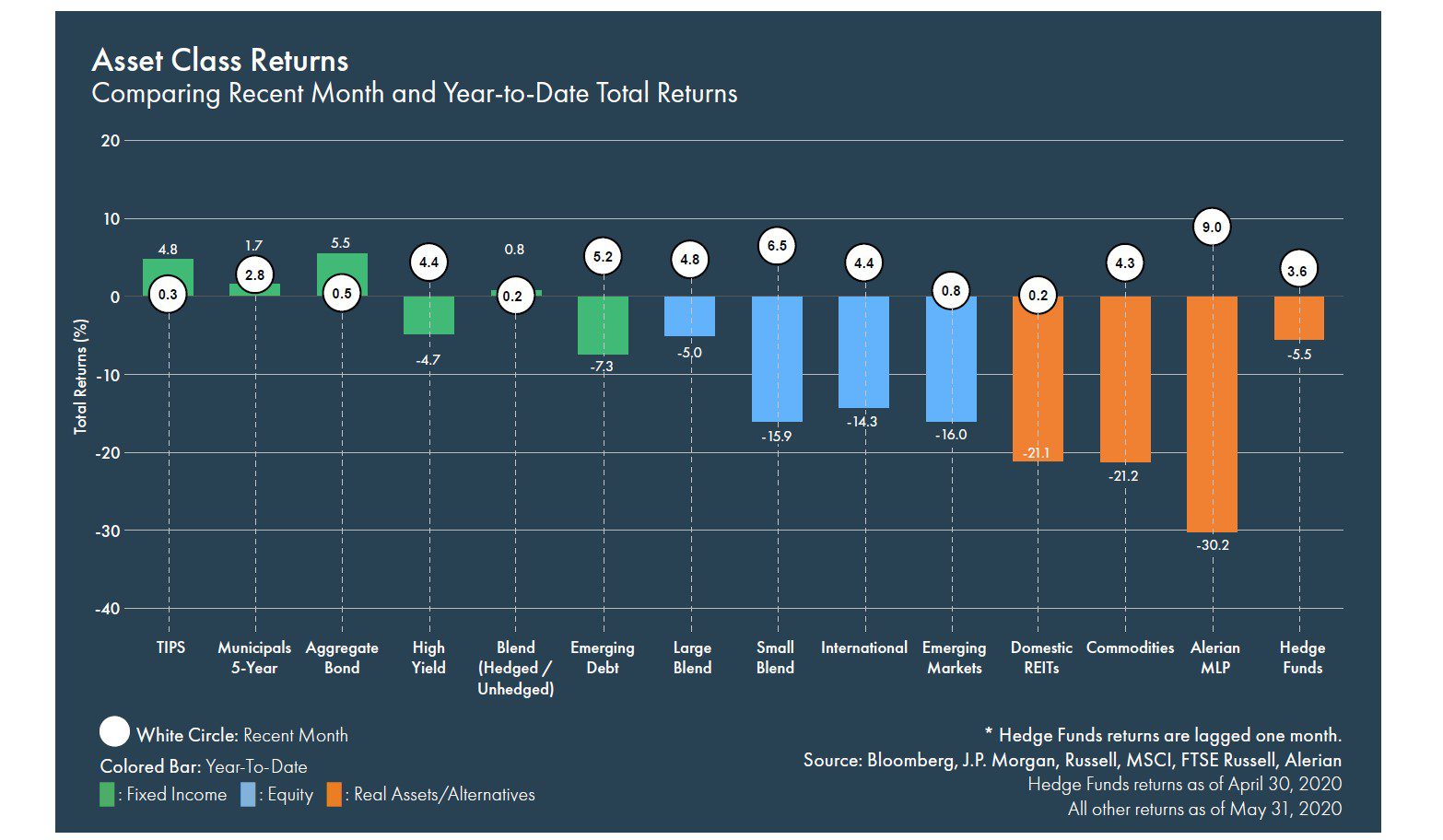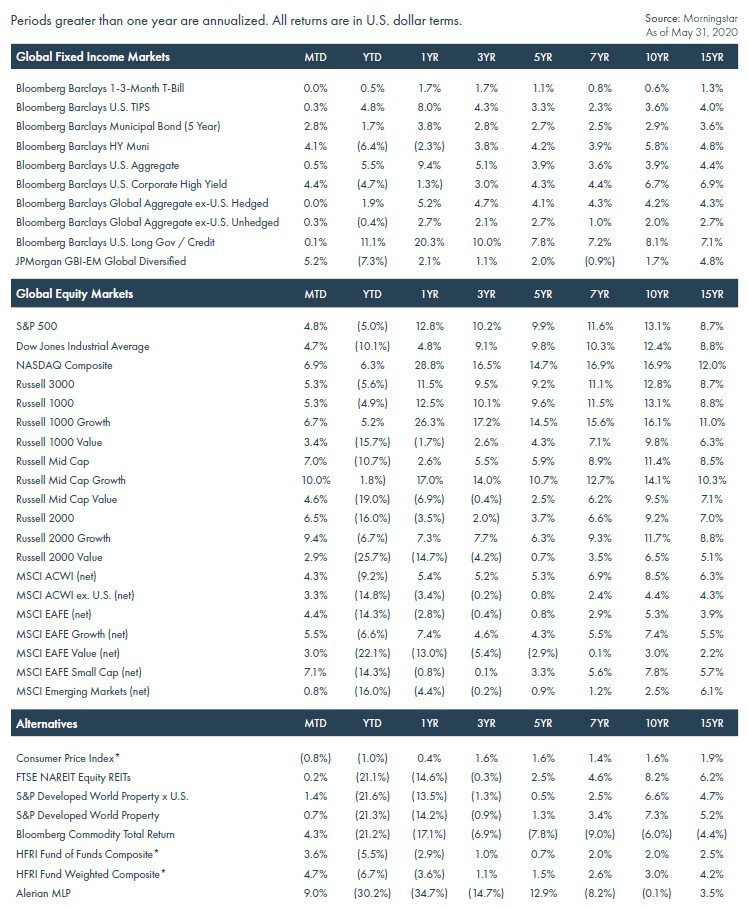By Bill Hornbarger, Chief Investment Officer at Moneta (@MonetaCIO)
On June 8, the Business Cycle Dating Committee of the National Bureau of Economic Research stated that the economic expansion that started in June of 2009 peaked in February of 2020. The U.S. economy entered a recession as a result of the coronavirus and forced shutdown. “Risk” assets came under pressure through late March before rallying due to the extraordinary monetary and fiscal policy responses. The Federal Open Market Committee (FOMC) lowered the target Fed funds rate to 0%, expanded quantitative easing efforts and targeted specific parts of the credit markets, which responded positively.
Benchmark Treasury yields have fallen appreciably in response. Credit spreads – both investment-grade and below-investment-grade – stabilized after widening in the market swoon. Credit spreads are dynamic and change with market conditions as perceived risk increases or decreases. Exhibit 1 shows a snapshot of Treasury yields and credit spreads at the beginning of the year versus where they currently stand. The credit spread represents a risk premium between a riskier bond and the credit risk-free Treasury alternative.

We previously wrote about the challenge of extraordinarily low bond yields on portfolio construction and the potential drag on returns. With yields remaining near record low levels and guidance from the Fed that short-term rates will remain at/near 0% for an extended period, let’s revisit that topic generally – and, specifically, the possible role of high-yield bonds in portfolio construction.
Traditionally, the role of core bonds in portfolio construction is to provide diversification from equities, liquidity and cash flow or current income exceeding inflation. In today’s low-yield environment, core bonds can provide liquidity and diversification, but cash flow is challenged and forward returns are expected to be low. High-yield bonds are one asset class investors should at least consider while acknowledging they aren’t appropriate for all investors and that they have more risk than core fixed income holdings.
High-yield bonds are debt securities issued by companies with lower credit ratings. To compensate investors for greater risk of default, these bonds typically offer a higher annual interest rate paid relative to U.S. government or investment grade debt. High-yield bonds also typically exhibit:
- Greater volatility relative to investment grade
- Lower correlations to traditional fixed income sectors, largely driven by their higher credit sensitivity (i.e. default risk)
- Lower sensitivity to interest rates
- More correlated with equity securities as a function of higher idiosyncratic business risks priced into the asset class
The risk premium for high-yield bonds more than doubled this year (see Exhibit 1). Investors grappled with the ramifications of the shutdown on the economy, earnings and liquidity. As the equity markets rallied and the effects of Fed intervention were felt, credit spreads stabilized, albeit at levels significantly higher than pre-COVID.

Historically, high-yield bonds have performed relatively well after credit spreads widened. They posted relatively strong returns after the last three recessions (Exhibit 2). The same can also be said of domestic equities. Since the correlation between high-yield bonds and U.S. large cap stocks is relatively high, as shown in Exhibit 3, it begs the question, “Why not just add more equity risk to the portfolio?”

Investors may want to consider an allocation to high yield for the following reasons:
- Increase portfolio cash flow. High-yield bonds as an asset class have one of the higher current return profiles of any liquid asset class.
- Diversification. High-yield bonds, over long period of times, returned somewhere between core bonds and equities with a volatility slightly closer to that of core bonds and a low correlation to core bonds. (Exhibit 3 & 4)
- Where appropriate, the current environment appears to be one of the better entry points to the asset class since the Global Financial Crisis.

In our opinion, the current recession is at least partially priced into the bond market. Treasuries remain near record-low yield levels and credit spreads have widened significantly to reflect the higher perceived economic risk. While we do not know when the recession will end, the high-yield asset class appears to have priced-in higher default rates and weaker earnings/credit quality. Global investor demand for yield and an extraordinary amount of stimulus being directed at the crisis may add a measure of stability to markets going forward. High-yield bonds can play an important role in strategic asset allocation programs with returns that can potentially be enhanced by thoughtful entry points and rebalancing approaches across market cycles.
Market Snapshot

Fixed Income
- Credit spreads narrowed on improved risk sentiment.
- Inflation expectations rose modestly, while real yields fell, benefiting Treasury Inflation-Protected Security (TIPS).
Equities
- Fiscal and monetary policy response to the global pandemic.
- Late May rally propelled small caps.
- Geopolitical tensions weighed on emerging market returns.
Real Assets/Alternatives
- Commodities, particularly midstream energy, benefited from higher oil prices.
- Attractive yield and improved investor risk sentiment buoyed Real Estate Investment Trusts (REITs).
Financial Market Performance

© 2020 Moneta Group Investment Advisors, LLC. All rights reserved. These materials were prepared for informational purposes only based on materials deemed reliable, but the
accuracy of which has not been verified. This is not an offer to sell or buy securities, nor does it represent any specific recommendation. You cannot invest directly in an index.
You should consult with an appropriately credentialed professional before making any financial, investment, tax or legal decision. Past performance is not indicative of future
returns. These materials do not take into consideration your personal circumstances, financial or otherwise.



